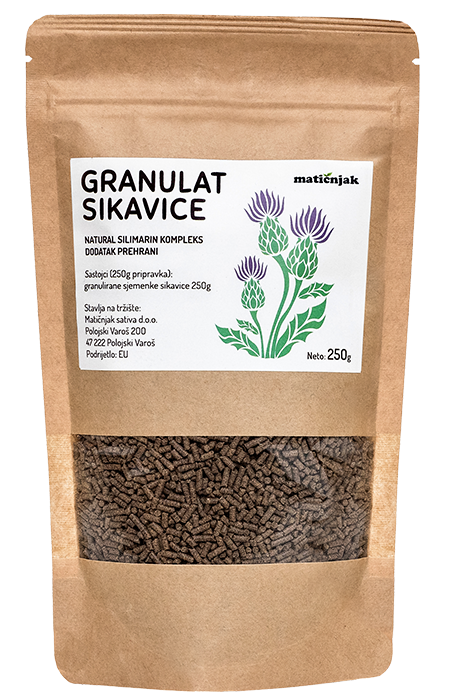Whether it's allergies or a cold, it's important to build a strong immunity in your child and start dealing with the symptoms as soon as possible.
Knowing the difference between a cold and an allergy can be a demanding task even for adults, especially during the fickle spring that brings extreme temperature changes. It is even more difficult with children who cannot communicate so clearly what exactly is bothering them, if the real cause is not treated in time, even more intense symptoms such as chronic fatigue can occur. However, there are some key differences that can indicate whether your child is allergic or a virus.
Symptoms of colds and allergies in children
Just like adults, children can develop allergic reactions when exposed to certain particles such as animal dander, dust or pollen from trees and grasses. In this case, their immune system overreacts to allergens and stimulates the release of histamine and other compounds into the bloodstream. This reaction causes common allergy symptoms in children, including:
- itchy eyes
- teary eyes
- runny nose
- cough and difficulty breathing
- sneezing
- sometimes a sore throat.
On the other hand, a cold is a contagious viral infection. Children can come into contact with viruses that cause colds through direct contact between peers, contact with respiratory droplets in the air or contact with viruses that linger on various surfaces. Common cold symptoms in children may include:
- runny nose
- cough and difficulty breathing
- sneezing
- sore throat
- fatigue
- dull pains in the body
- elevated temperature in some cases.
5 key differences between allergies and colds in children
As we can see, the symptoms of colds and allergies in children are extremely similar, and if you don't have an elevated temperature, chances are high that you will mistake them. However, you can look for some of these signs to distinguish a cold from an allergy.
1. If the child is under one year old, he probably has a cold
It is unusual for a child under the age of one to be diagnosed with seasonal allergies. With allergies, the child usually has to be exposed to allergens several times to get an allergic reaction, which is rare in very young children. The chance of having an allergic reaction to something during the first year of life cannot be completely ruled out, but typical seasonal allergies usually affect slightly older children.
2. A high temperature indicates a cold or a viral infection, not allergies
If your child has a fever, he almost certainly has a cold or some other type of viral illness, not an allergy. Fever is one of the main indicators since allergies do not cause it. However, a cold can occur without an elevated temperature, so in that case it is important to look for other signs.

Watery, itchy eyes usually indicate allergies, not a cold. Also, look for discoloration under the child's lower eyelid - if it's purple or red, chances are it's allergies. Another cause of such a colored eyelid is a genetic predisposition for this characteristic, which then has no connection with a cold or allergy.
5. Monitor the discharge from the child's noseA clear, sparse nasal discharge, along with watery eyes and itching, suggests that your child may have an allergy. Of course, children with a common cold can also have clear secretions, but thick nasal discharge, regardless of color, suggests a cold or some other infectious process.
How to prepare for cold and allergy season?
If you find that your child suffers from allergies, it is first necessary to alleviate the existing symptoms and then work on preventing all potential future ones. An excellent solution comes from nature in the form of black cumin oil, also known as liquid gold. As described by the ancient peoples, black cumin oil "cures everything except death", and there is more and more scientific evidence to confirm this. It is important to point out that black cumin oil is not recommended for children under two years of age.

One of the main and most potent effects of black cumin oil is precisely its ability to relieve allergy symptoms and serve as a preventive measure if used in time. According to research from 2011, after daily consumption of black cumin oil for two weeks, relief of symptoms such as nasal congestion, itchy nose, runny nose and sneezing was reported, and it will also help with asthma problems. In addition to being useful for allergies, it also regulates immunity, and this is precisely the key to preventing colds and other viruses.
In addition to black cumin oil, two other oils are extremely useful for building strong immunity: walnut oil and wild flax oil. The intake of omega acids is extremely important for children even at a young age, and wild flax oil will provide them with the necessary dose of alpha-linolenic fatty acid and vitamin E. Wild flax oil is considered the best cold-pressed oil on the market and can be recommended for consumption by all age groups. , from infants to seniors. Immunity will be especially ready for all challenges if you add walnut oil to the combination, which is also an excellent source of omega-3 fatty acids, as well as minerals such as magnesium, iron and phosphorus.
Choose only the best natural oils for yourself and your child
Nature offers us a solution for almost every problem we have, but not all the products we find on the market have equally utilized its full potential. When preparing medicinal oils, the origin of the food plays a big role, as well as the process by which it was obtained. That's why the best address for completely natural oils has always been Maticjak which puts 100% love and 0% chemistry into its products. In Matičnjak, black cumin oil, wild flax oil and walnut oil are produced exclusively by careful cold pressing, which ensures the highest product quality and the stability of all active substances that heal the body.

Nigella oil it is obtained by pressing in small batches, on a weekly basis, which makes quality control even more precise. Just like flaxseed oil the walnut oil, is packaged in dark bottles that protect the natural active ingredients and ensure that it will be useful to the last drop. Visit Matičnjak web shop and create your own little natural pharmacy, whether you're looking for a way to build your child's healthy immunity or relief from seasonal allergies.








